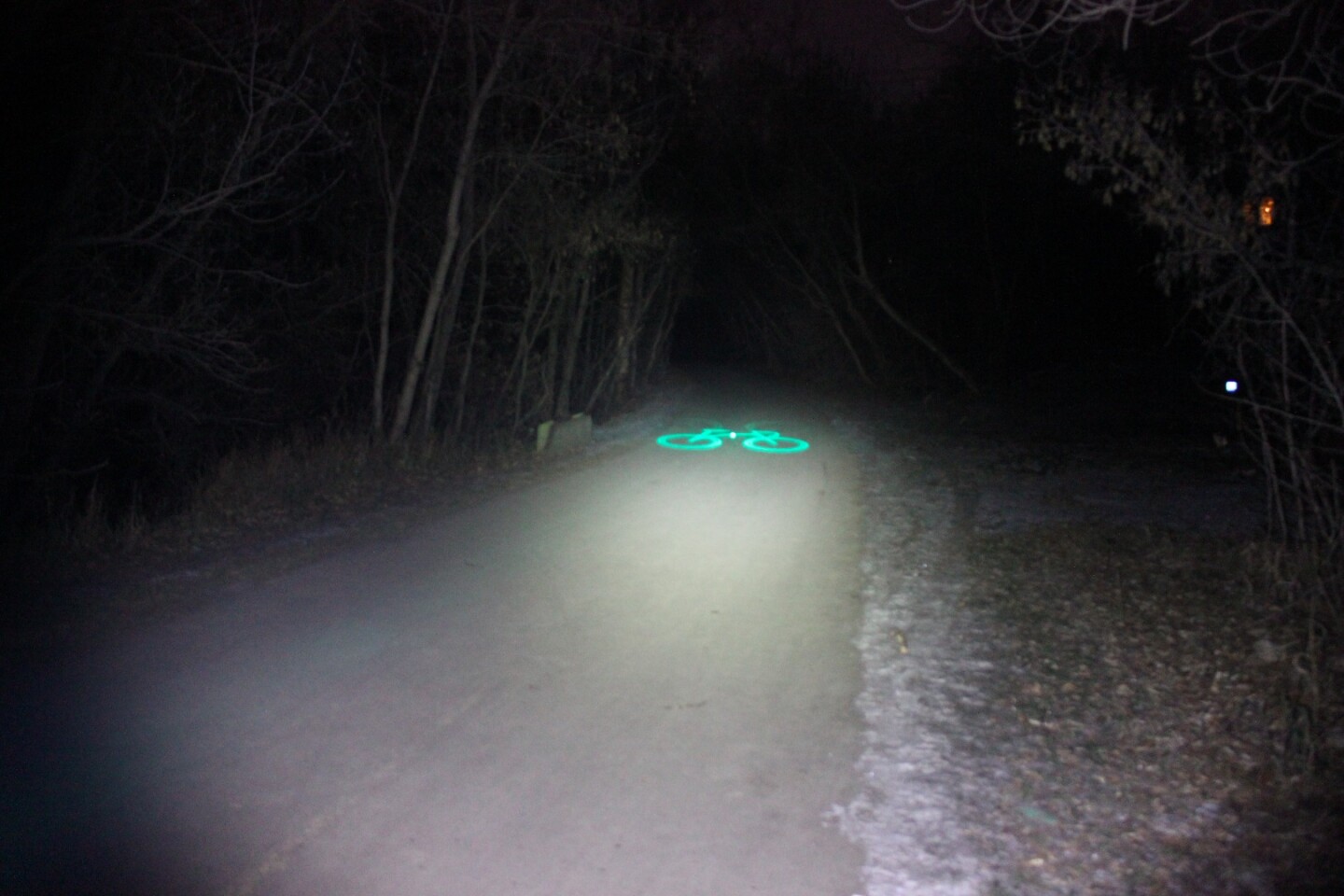According to a study conducted by the UK's Transport Research Laboratory, 79 percent of bicycle-vs-car accidents occurred when drivers maneuvered into the path of cyclists travelling at speed. In order to help lower that number, University of Brighton product design student Emily Brooke created the Blaze Laserlight as a final-year project. The bicycle headlight is designed to let motorists know that a bike is approaching, by laser-projecting an image of a bicycle onto the road approximately six meters (20 ft) in front of the rider. Four years and one successful Kickstarter campaign later, the Laserlight is now available to buyers in North America. We recently had a chance to try it out for ourselves.
First of all, let's get one thing stated clearly – this is the most beautiful bike light we've ever seen.
With its near-seamless contoured aircraft aluminum body, it looks like the headlight that Apple would make. In fact, it's manufactured for the Blaze company by PCH International, which also makes devices for Apple. The swanky construction even extends to the marine-grade steel handlebar mount, from which the headlight can be quickly released when not in use. Once it's off of that mount, the laser can't be turned on, so the chances of it accidentally getting shone in anyone's eyes are minimized.

Additionally, the 182-gram light isn't just water-resistant like many others, but is actually waterproof to a depth of one meter (3.3 ft). USB charging of its Sony lithium battery is accomplished via a watertight magnetic power port – as an added visual bonus, the end of its charging cable glows reddish-orange as it's first juicing up, goes blue once it's at three-quarter capacity, then turns fully green when the battery is full.
Along with the laser diode, the Laserlight also has a conventional white LED headlight that can be set to one of three modes: flashing at low output (100 lumens), steady at low output, and steady at high output (300 lumens). The laser can likewise be set to flashing or steady modes, and can be turned on and off independent of the headlight.
Battery run times vary greatly depending on the combination of modes used, but they vary from two hours at steady-high-output/steady-laser to 13 hours at flashing-low-output/flashing-laser – if you keep the laser off completely, the LED should be able to go for 29 hours in flashing mode. Additionally, keep in mind that for riding on streetlight-lit roads, the low-output setting ought to be sufficient for most users.

In case it's still not exactly clear what the laser is supposed to do, though, here's Emily's concept.
First and foremost, if you're riding in a motorist's blind spot (or if they just don't shoulder-check), the glowing green bike symbol on the road surface slightly ahead of them should alert them to the fact that there's a bike back there – that's the idea, anyway. It could also let drivers crossing your path at intersections know that you're on your way, plus it may give motorists pulling out from curb-side parking spots a heads-up that it is not safe to proceed.
According to the company, on-road tests have proven that the laser symbol does indeed increase drivers' awareness of cyclists sharing the road with them. When we tried the Laserlight out, we certainly didn't have any close calls – although there's no saying that we would have with a regular headlight. We did initially wonder if the laser would shine through vehicles' back windows when we pulled up behind them, but the highest it got was onto their bumpers.
It is worth noting that although early reports stated that the laser was visible in bright daylight, it's not very visible. Although it stands out vividly once dusk approaches, the bike symbol mostly just looks like a single green point when the sun is high. Additionally, if you use the laser, be prepared for numerous questions and comments from curious onlookers – whether you consider that to be a detriment or a selling point is up to you.

And yes, the LED does a good job at illuminating the road. Additionally, our test unit stood up just fine to our riding over lots of potholes and other vibration-inducing "road irregularities."
Although the Laserlight has been available in the UK for the past two years, its market has only just recently been extended to the US and Canada. If you live in either of those countries and wish to buy one, it'll cost you US$200 – laser symbols, 300-lumen LEDs and solid aluminum construction don't come cheap.
Additionally, if you're thinking that you'd not only like a Laserlight but also a matching tail light to go with it, just such a beast is now on Kickstarter. The Blaze Burner tail light doesn't incorporate any lasers, but it does put out 100 lumens, attaches to its mount via a magnetic bracket, has a built-in ambient light sensor, and once again looks like an Apple product.
It's already surpassed its funding goal, and has a planned retail price of £49 (about US$74).
Product page: Blaze











